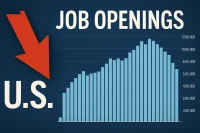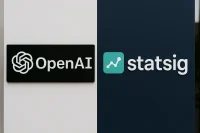US job growth is projected to have rebounded sharply in November, recovering from the constraints of hurricanes and labor strikes that significantly impacted October’s figures.
However, economists warn the uptick may not indicate a fundamental shift in labor market conditions as the Federal Reserve weighs another interest rate cut later this month.
Anticipated Job Growth
- Nonfarm Payrolls Forecast: Economists surveyed by Reuters expect payrolls to rise by 200,000 in November, with estimates ranging from 155,000 to 275,000.
- October Impact: The economy added only 12,000 jobs in October, marking the smallest gain since December 2020.
- Trend Analysis: Averaging the October and November data suggests job growth is stabilizing around 145,000 per month, consistent with a slowing but healthy labor market.
Need Career Advice? Get employment skills advice at all levels of your career
Temporary Shocks to the Labor Market
Hurricanes Helene and Milton, along with strikes at Boeing and a smaller aerospace company, temporarily disrupted the labor market:
- Returning Workers: Boeing and other aerospace workers are expected to add approximately 38,000 jobs.
- Post-Storm Rebound: Rebuilding efforts and recovery from the hurricanes could contribute 60,000 to 65,000 jobs.
Data Collection Challenges
October’s employment data faced additional distortions:
- Survey Collection: The response rate for October’s establishment survey was 47.4percent, the lowest since January 1991 and significantly below the five-year average of 69.2 percent.
- Revisions Expected: Economists anticipate upward revisions to October’s job numbers, with historical data suggesting initial estimates often overstate the drag from storms.
Looking for a job? Visit whatjobs.com today
Unemployment and Wage Growth
- Unemployment Rate: Expected to rise slightly to 4.2 percent, driven by a rebound in labor supply after hurricane-related displacement in October.
- Wage Growth: Monthly average hourly earnings are forecast to increase by 0.3 percent, down from October’s 0.4 percent, lowering the annual wage growth rate to 3.9 percent from 4.0 percent.
Federal Reserve Outlook
Economists believe recent labor market data will not substantially alter the Federal Reserve’s policy trajectory:
- Interest Rate Decisions: The Fed has cut rates by 75 basis points since September, with markets pricing a 70 percent chance of another 25 basis point reduction at the Dec. 17-18 policy meeting.
- Inflation and Economic Growth: Despite cooling in the labor market, inflation remains above the Fed’s 2 percent target, complicating the outlook for 2025 rate cuts.
Hiring? Post jobs for free with WhatJobs
Political and Economic Uncertainty
The incoming Trump administration’s policy agenda adds another layer of uncertainty:
- Market Sentiment: Business confidence has improved on expectations of deregulation.
- Trade and Labor Concerns: Potential tariffs and mass deportations raise fears of inflationary pressures and labor market disruptions.
Lydia Boussour, senior economist at EY-Parthenon, said:
“Considering the election results, we now assume a rate cut at every other meeting in 2025, for a total of 100 basis points of easing, down from 150 basis points previously.”
Looking Ahead
As the labor market stabilizes post-hurricane and strike disruptions, the focus will remain on long-term trends rather than short-term fluctuations.
Policymakers will likely consider the broader economic environment, including inflation and fiscal policies, in shaping future monetary decisions.




